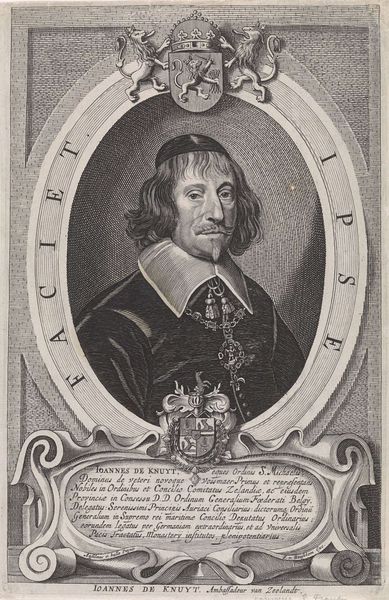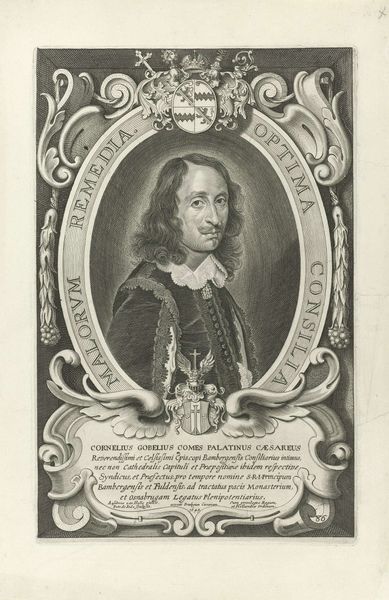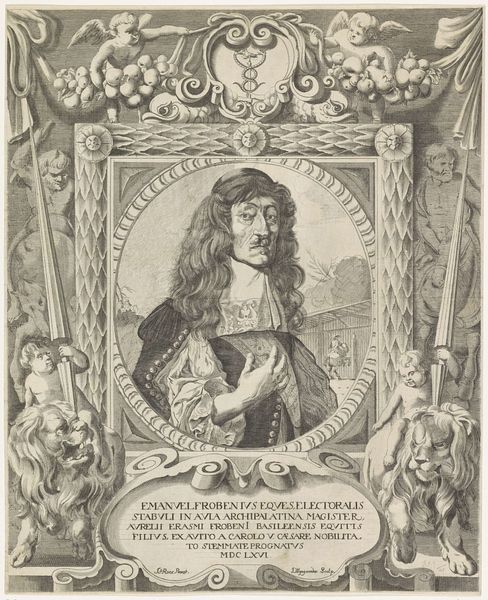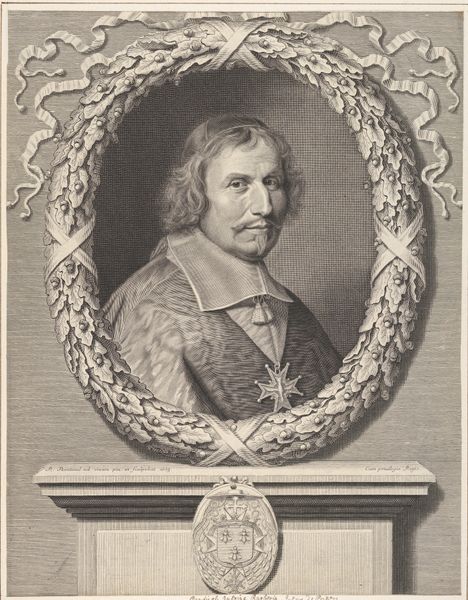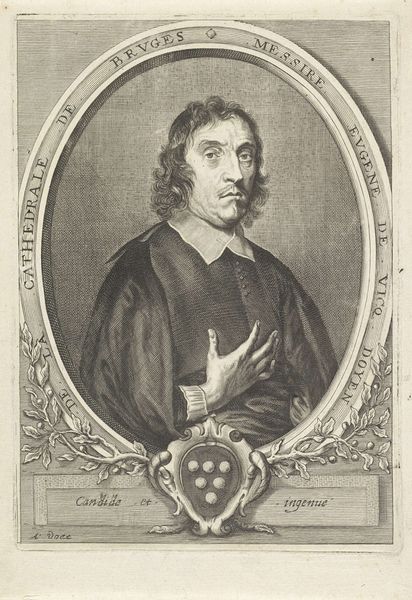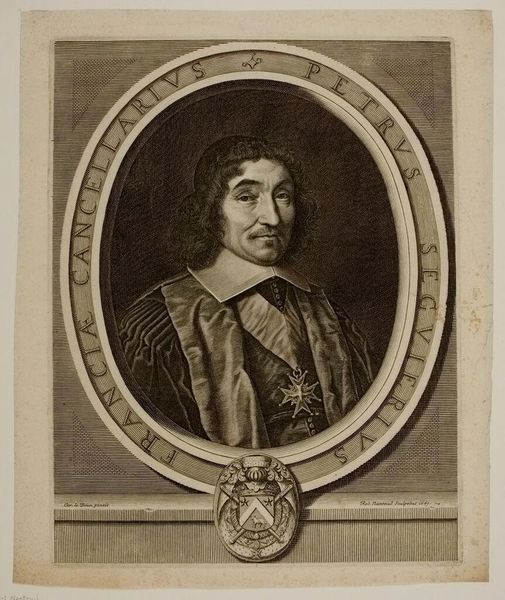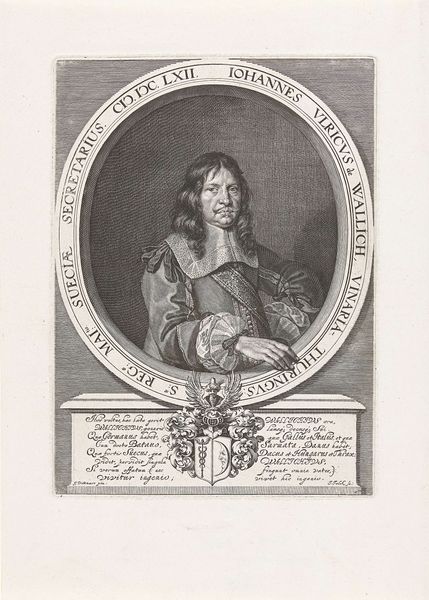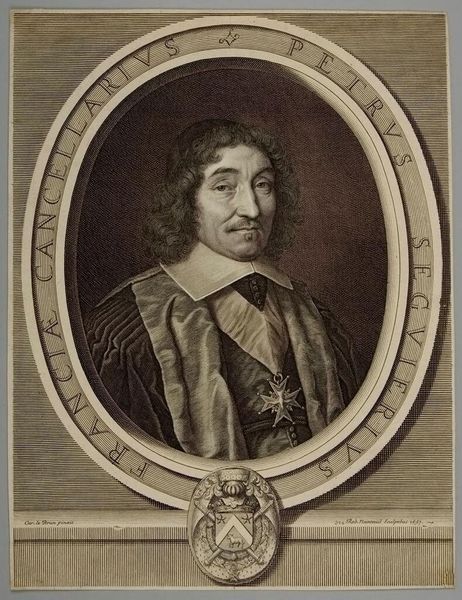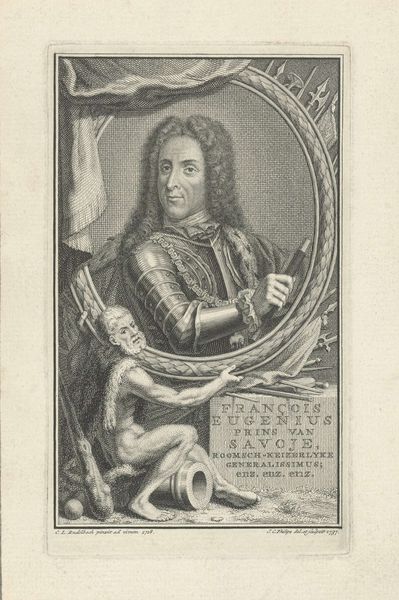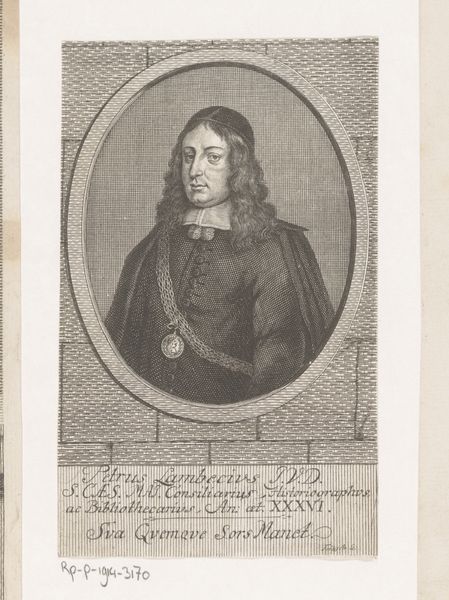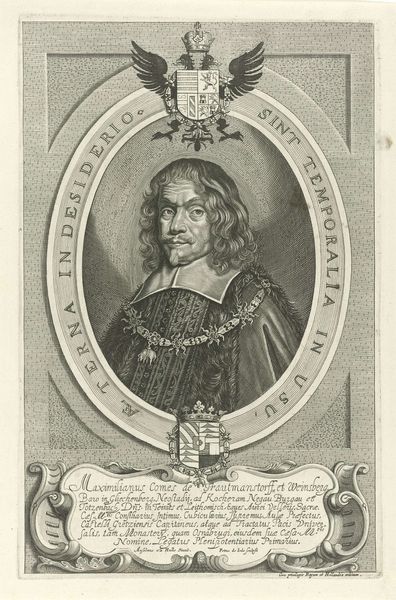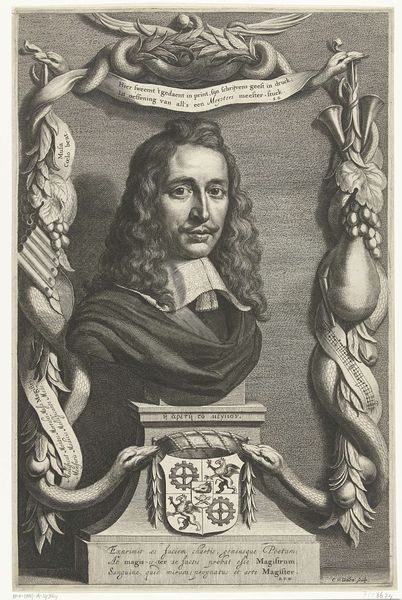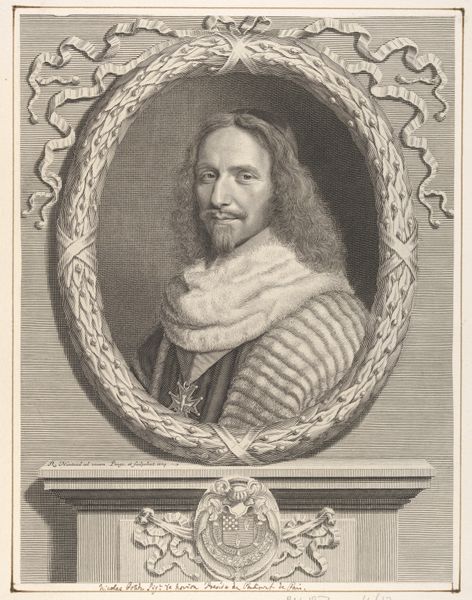
engraving
#
portrait
#
baroque
#
old engraving style
#
caricature
#
line
#
history-painting
#
engraving
Dimensions: height 482 mm, width 343 mm
Copyright: Rijks Museum: Open Domain
Curator: We're standing before an engraving, likely dating to before 1669, titled "Portret van Cornelis Evertsen" by Arnold de Jode. It presents a stately portrait of a man, framed rather dramatically. Editor: Yes, there’s a formality but also something almost cartoonish about the line work. The etching seems intent on portraying power and authority, yet it feels slightly exaggerated. The frilled collar and puffed sleeves almost overwhelm him. Curator: It is quite elaborate in its construction. Notice how de Jode uses line, specifically, to create the texture of the clothing and skin. The figure of Evertsen dominates, centered within a swirling wreath of foliage contrasted against a sea battle at either side in the background. Editor: That wreath feels very symbolic. The oak on the left, laurel leaves on the right—strength and victory, classical allusions tied to this 17th-century admiral. And beneath the portrait, that sculpted tablet echoes the language of heroism, linking Evertsen to the 'Sea Hero of Zeeland'. What does the poem say? Curator: My translation reads: "The Zeeland Sea Hero Cornelis Evertsen, Lieutenant Admiral of Zeeland… Who in Vlissingen and Koll fell – struck down by a ball of iron… upon his name rests honor forever." De Jode emphasizes the sitter’s historical context and bravery. Editor: Definitely. The ships locked in battle below remind the viewer of Evertsen’s accomplishments in the naval history. The arrangement, although fairly conventional, communicates something about valor in leadership. He almost clutches the object in his left hand…is it a staff? Curator: It seems so. Considering he holds this symbol of command with one hand, and places his other hand on his hip to reveal a glimpse of his sword, these choices of posing, the details of military prowess and command, combine with Baroque exuberance. Editor: Looking again, the contrast in textures achieved simply with lines—the roughness of the ocean versus the silkiness of his sash—it really is a demonstration of what engraving can achieve. Curator: I agree. By looking at the linear qualities of De Jode’s image in relation to symbolism used, we get a potent depiction of a naval hero. Editor: And by bringing both to the table, it has given us much to explore.
Comments
No comments
Be the first to comment and join the conversation on the ultimate creative platform.
